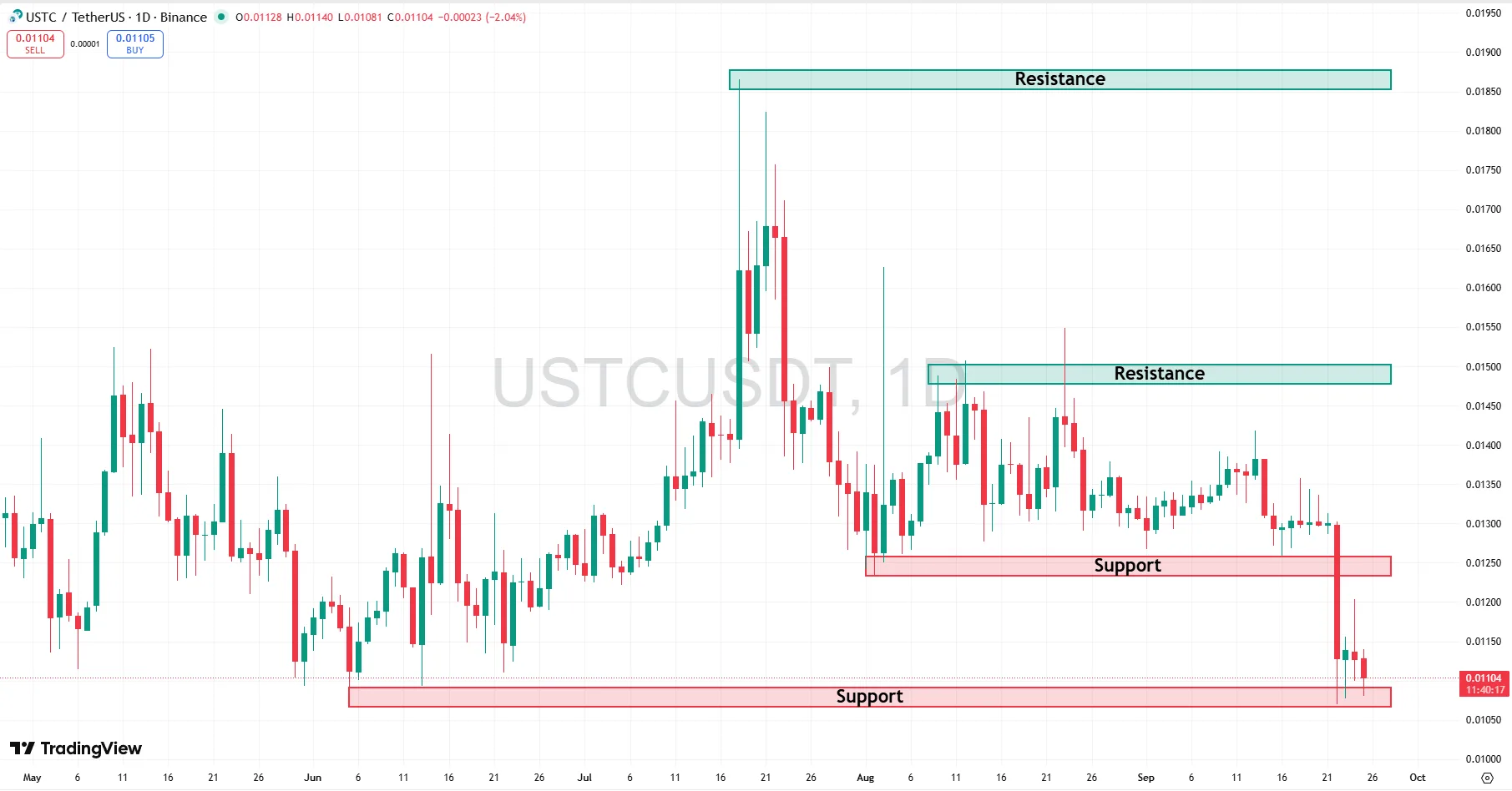The following analysis summarises current technical structure and the primary fundamental drivers affecting TerraClassicUSD (USTC). The goal is clarity: key levels to watch, likely scenarios and the market context that explains recent weakness.
Technical outlook
USTC is testing a critical support zone near $0.010. This area has acted as a significant demand level in prior price action. If this zone holds, a technical rebound toward $0.012–$0.013 is a reasonable short-term scenario. A decisive daily close below $0.010, however, would increase the probability of a deeper decline, as there are limited structural supports until sub-cent levels.

Why the price is down
- Global macro conditions. Risk assets have come under pressure as bond yields remain elevated and the US dollar has strengthened. Investors are reducing exposure to speculative assets, and cryptocurrencies have been affected directly.
- Regulatory concerns. Ongoing regulatory scrutiny across major jurisdictions has weighed on market sentiment. Even minor announcements can produce outsized reactions in low-liquidity tokens.
- Liquidity rotation. Bitcoin’s market dominance is absorbing much of the available capital, leaving smaller altcoins without the same inflows. This reduces buying depth and increases volatility for tokens like USTC.
- USTC-specific fundamentals. The token still carries legacy risk from the Terra ecosystem failure. Community-led recovery efforts exist, but market confidence remains fragile and sellers have been dominant at major supply levels.
Market outlook
USTC currently sits at an inflection point. Defending the $0.010 zone would allow for a controlled, technical recovery toward the $0.012–$0.013 range. Failure to hold this level would likely open the path to lower prices, especially while the broader market remains risk-off. Short-term traders should prioritise risk management and wait for confirmation above the $0.012–$0.0125 area before assuming a reversal.
Investment perspective
For long-term investors, accumulation at major support levels can be considered, provided position sizing reflects the high-risk profile and potential for further downside. For active traders, a clear structure break below $0.010 should be treated as a trigger to reduce exposure rather than a buy signal.

